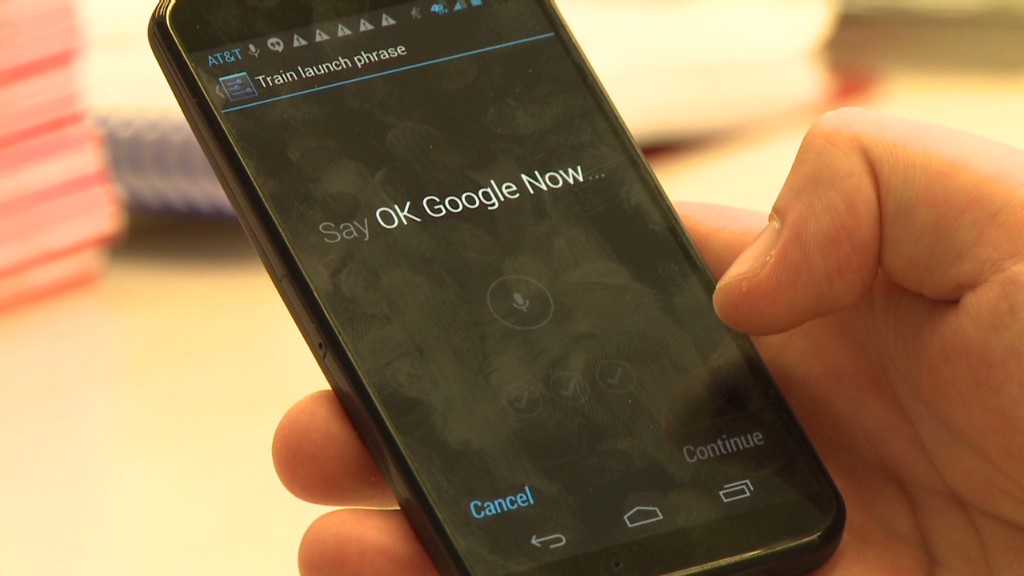
Despite the hype, the Moto X is just a smartphone -- but a really good smartphone.
Its looks, screen, speed and battery life are only good enough.
But the Moto X's little details make a huge difference. The phone has a curved back to fit nicely into the hand, but there's a little dimple in the curve so the phone doesn't wobble when placed on a table. The notification screen shows you new emails, calls and texts without turning the whole screen on -- and without unlocking the phone.
The most amazing thing about the Moto X: It has a 4.7-inch screen, but it feels like you're holding a phone with a much smaller one. Motorola was nearly able to eliminate the side bezels entirely, while making the top and bottom of the phone as compact as humanly possible. It's arguably the most perfectly sized phone, striking a balance between screen size, pocketability, and one-handed usability. By comparison, the screen on the HTC One has the same dimensions, but the phone looks and feels noticeably larger.
Strangely enough, it's Google's biggest claims about the Moto X that don't live up to the hype.
Related story: Google's Moto X smartphoneis big ideas, modest execution
The Moto X has a processor dedicated to listening for your voice (and only your voice) to deliver the command "OK Google Now." When you say those magic words, the Moto X will let you ask for directions, play music, send text messages, place calls, set reminders, and conduct Google (GOOG) searches.
It works, mostly. The phone never failed to heed my command, even when it was across the room with the screen off. But outside of this active listening, Motorola didn't do much to customize the Google Now voice interface. Any Android phone can do the same thing -- as can Siri on the iPhone -- albeit with a few extra button presses.
The only place where this feature really makes life easier is in the car. But Android's voice recognition isn't quite good enough yet to make the process of searching for locations or texting by voice a frustration-free experience.
And here's the deal-breaker: If you use a password on your lock screen, this feature basically becomes useless. You can't even set a reminder or check the weather without entering your password.
Another touted feature that fails to live up to the hype is a quick-access gesture to get to the camera. By twisting the phone like a screwdriver, the camera screen comes right up, just as advertised. But it isn't actually much quicker than turning on the Android lock screen and swiping to the right.
The camera itself is also a letdown. It's just no match for the likes of the Samsung (SSNLF) Galaxy S IV, Apple (AAPL) iPhone and Nokia (NOK) Lumia Phones.
In well-lit situations, the 10-megapixel sensor is capable of producing photos that are crisp and clear, if a little over-saturated. In low-light, photos become artifacty and noisy, with poor reproduction of color.
When the Moto X hits stores at the end of August, it will be available on every major U.S. carrier. If you're an AT&T (T) customer, you will be able to fully customize the appearance of the phone, choosing from an array of colors. That feature is expected to be available for non-AT&T customers later this year.
The 16 gigabyte phone will cost $200, which is about $50 to $100 too much. But if you want an Android phone whose software actually resembles Android, this is one of the cheapest and easiest ways to do it without paying $700 up front.
Ultimately, the Moto X is really about balance. Its "special features" are more of a preview of things to come, and less a realization of the future. It's not the best phone at any one thing, but it's not too slow. It's not too big. It's not too boring. It's the Android phone that someone who is neither Luddite, nor tech junkie, should buy.

